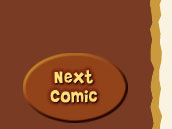But to say they turned lemons into lemonade is an understatement. Within months after
Sometime Stories came out, McCarthy and Ewins were both earning money with other jobs in comics. McCarthy started working for
2000AD, illustrating Judge Dredd and contributing other stories that led to even more opportunities. He collaborated with Ewins and Peter Milligan on the excellent Eclipse Comics anthology,
Strange Days. As his star rose, McCarthy worked as a designer on the films
Highlander, the live action
Teenage Mutant Ninja Turtles, and
Lost in Space. He was also brought in by
Saturday Night Live producer Lorne Michaels to provide visual gags for the film
Coneheads.
McCarthy spent much of his latter career working in film, animation, and television, but he kept working in comic books as well. He returned to
2000AD in 2010, partnering with Al Ewing on a Judge Dredd story that spoofed the
Dr Who TV series. He joined Ewing again in 2012 to produce
The Zaucer of Zilk, a critically acclaimed mini-series that McCarthy described as a cross between
Harry Potter and
Aladdin Sane. He recently began working on a new psychedelic series for Dark Horse Comics called
Dream Gang.
Brett Ewins story is a bit more ill-fated. He enjoyed similar success as McCarthy soon after
Sometime Stories, providing Judge Dredd and Rogue Trooper stories as well as front cover art for
2000AD. While working on
2000AD he also produced the award-winning mini-series
Skreemer for DC and launched the long-running monthly comic magazine
Deadline (best known for introducing Tank Girl). Over the course of the 1980s, Ewins took on way too much workload and it all came crashing down when he suffered a serious mental breakdown in 1991. His health would further deteriorate in the coming years as he was diagnosed with paranoid schizophrenia and battled physical conditions (e.g., rheumatoid arthritis) that made it almost impossible for him to work on comics.
Despite all these issues, Ewins seemed determined to remain creatively active. After taking an extended break from comics, he spent eight years putting together a comics anthology that was published by Cyberosia Publishing in 2004. But his troubles were hardly over. In 2012, Ewins was injured during a confrontation with police in his home, during which he stabbed a police officer with a kitchen knife. Immediately after the confrontation, he suffered a heart attack that put him in a coma, kept him hospitalized for three weeks, and resulted in a collapsed lung. Once released from the hospital, Ewins was jailed on two charges stemming from stabbing the police officer.
After spending seven months in jail, Ewins' trial concluded in September 2012 and he was found guilty on one of the two charges. He spent another two months in jail awaiting sentencing, after which he was released with time served. Ewins has spent the last couple years recuperating both physically and mentally. He's still not healthy enough to work on comics, but his enormous
contributions to comic art continues to be celebrated.
Both Brendan McCarthy and Brett Ewins, as well as Jim McCarthy (who also was a music journalist), had long and prosperous careers in comics. And while their artwork in
Sometime Stories is good, they all improved greatly (and quickly) as they moved on. As a stand alone book,
Sometime Stories is fairly entertaining, but it's also frustrating because the intriguing stories and characters that were intended to be continued in future issues never were.



HISTORICAL FOOTNOTES:
It is currently unknown how many copies of this comic book were printed. It has not been reprinted. In additional to being a comic-book character created by Brendan McCarthy, Finn MacCool was actually a famous, mythological Irish legend who was a warrior and a leader of the first Irish army in third-century Ireland. Several period novels have been written about his exploits by various authors. McCarthy was aware of the Irish legend, as he stated on his blog page about Sometime Stories: "Finn Mac Cool was based on my continuing interest in most things Irish, seeing as that's where I spent most of my childhood, growing up in the West of Ireland."
Brett Ewins' character Felix Adler also turns out to be a real figure in history. Felix Adler was a German American professor, religious leader and social reformer who founded the Ethical Culture movement. In his lectures and essays, Adler looked beyond the concerns of family, labor, and race to the long-term challenge of reconstructing schools and government to promote greater justice in human relations. I wonder if Ewins knew who Felix Adler really was. I have to presume he did, though I can't see any evidence of it in Sometime Stories.
The Starlog advertisement on the back cover is cool because it promotes the 4th issue of a major science-fiction media magazine that ran for more than 30 years. Starlog was launched in 1976 and early issues focused on TV shows like Star Trek and The Bionic Woman and movies like Star Wars and Close Encounters of the Third Kind.

COMIC CREATORS:
Brett Ewins - 1 (collaboration), 2 (editorial), 3-17 (collaboration), 18 (art, shared), 19 (shared), 27-30
Brendan McCarthy - 1 (collaboration), 3-17 (collaboration), 19 (shared), 21-25
J. Arthur Biffo - 28 (shared)
G.P. Rice - 18 (script, shared)
Mick Bodman - 18 (shared)
Felix Adler - 19 (collaboration, shared)
Roger Kaputnik - 19 (shared)
Jim McCarthy - 20
Macasso Bros. - 26 (art)
Tony Clark Jr. - 31
Starlog Group Inc. - 32 (ad) 






































